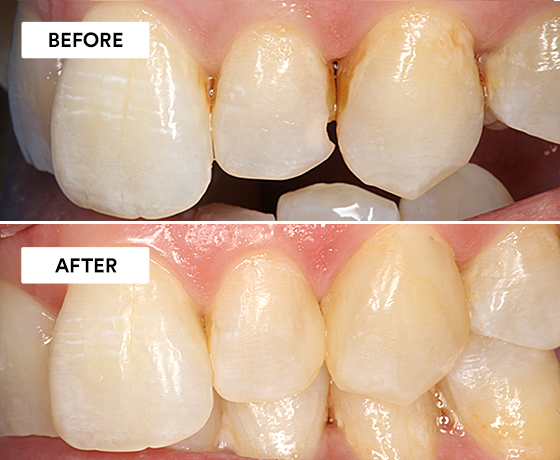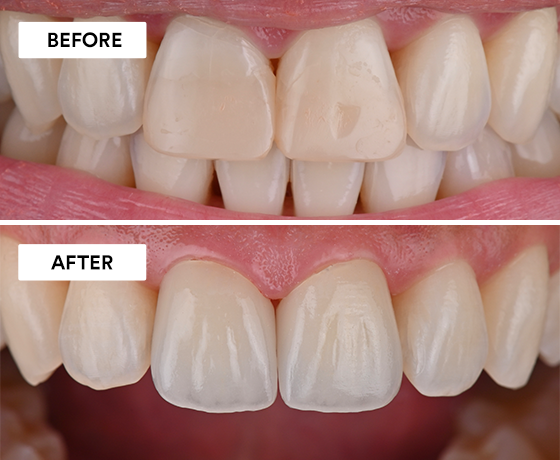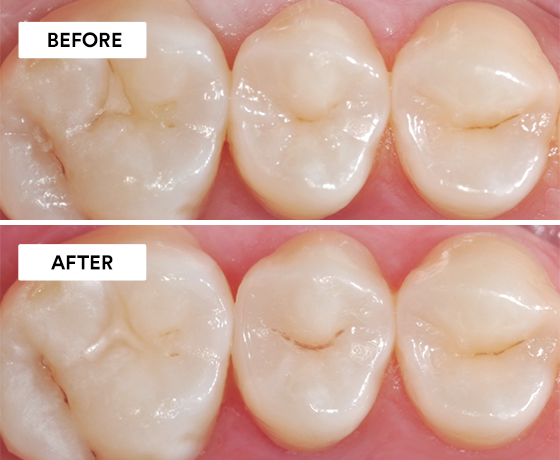Clinical Case: Is it possible to do more with less? Cracking the chameleon effect
Using 3M™ Filtek™ Easy Match Universal Restorative.


The use of resin-based fissure sealants can be an efficient and effective means of protecting molars from caries. Several factors influence treatment success…
Especially in pediatric patients with a high caries risk, the use of fissure sealants can be an effective measure[1]. By sealing the enamel pits and fissures of permanent molars with a resin-based material, an impermeable barrier is created between the enamel and the oral environment. In this way, the risk of caries development in the particularly vulnerable occlusal parts of molar teeth is reduced significantly. Since the retention of the sealants is better on sound enamel than on questionably carious tooth surfaces[2], we use to seal permanent molars of children who are likely to develop caries shortly after the complete eruption of the teeth.

Initial situation in a seven-year-old female patient with a high caries risk: Mandibular right first molar after the placement of rubber dam.

Use of a rose-head bur for fissure preparation: The fissures are opened slightly and the surface is cleaned.

Alternatively, 3M™ Clinpro™ Prophy Powder can be applied to the tooth surface with an air-polishing device to create a clean surface, followed by rinsing with water.

Application of 3M™ Scotchbond™ Universal Etchant to the enamel surfaces to be sealed. The etchant should be removed after 15 seconds.

Situation after removal of the etchant with water and subsequent air-drying.

Dispensing of 3M™ Clinpro™ Sealant into the pits and fissures of the molar. The pink colour ensures clear visibility and precise control over the location and amount of sealant placed.

After light-curing, the sealant appears white. It provides a barrier that protects the vulnerable occlusal surface from plaque adhesion. For optimal results, the use of a fluoride-containing varnish is recommended.
Résumé
The described procedure is a quick and effective way of reducing the caries risk in pediatric patients. In order to provide for durable results, the quality of the sealant layer should be assessed on a regular basis and replaced if necessary[3].
References
[1] Ahovuo-Saloranta A, Hiiri A, Nordblad A, Mäkelä M, Worthington H. Pit and fissure sealants for preventing dental decay in the permanent teeth of children and adolescents. The Cochrane Database of Systematic Reviews 2008; Issue 4:Art. No.: CD001830. DOI: 10.1002/14651858.CD001830.pub3.
[2] Michalaki MG, Oulis, CJ, Lagouvardos, P. Microleakage of three different sealants on sound and questionable occlusal surfaces of permanent molars: an in vitro study. Eur Arch Paediatr Dent. 2010
Feb, 11 (1): 26-31.
[3] Mejare I, Lingstrom P, Petersson L, Holm AK, Twetman S, Kallestal C, et al. Caries preventive effect of fissure sealants: a systematic review. Acta Odontol Scand 2003;61(6):321-30.

Using 3M™ Filtek™ Easy Match Universal Restorative.

Using 3M™ Imprint™ 4 Light VPS Material, 3M™ Intra-oral Syringe, 3M™ Imprint™ 4 Heavy VPS Material, 3M™ Protemp™ 4 Temporization…

Using 3M™ Scotchbond™ Universal Etchant, 3M™ Scotchbond™ Universal Adhesive, 3M™ Elipar™ DeepCure-S LED Curing Light, 3M™ Filtek™ One Bulk Fill…